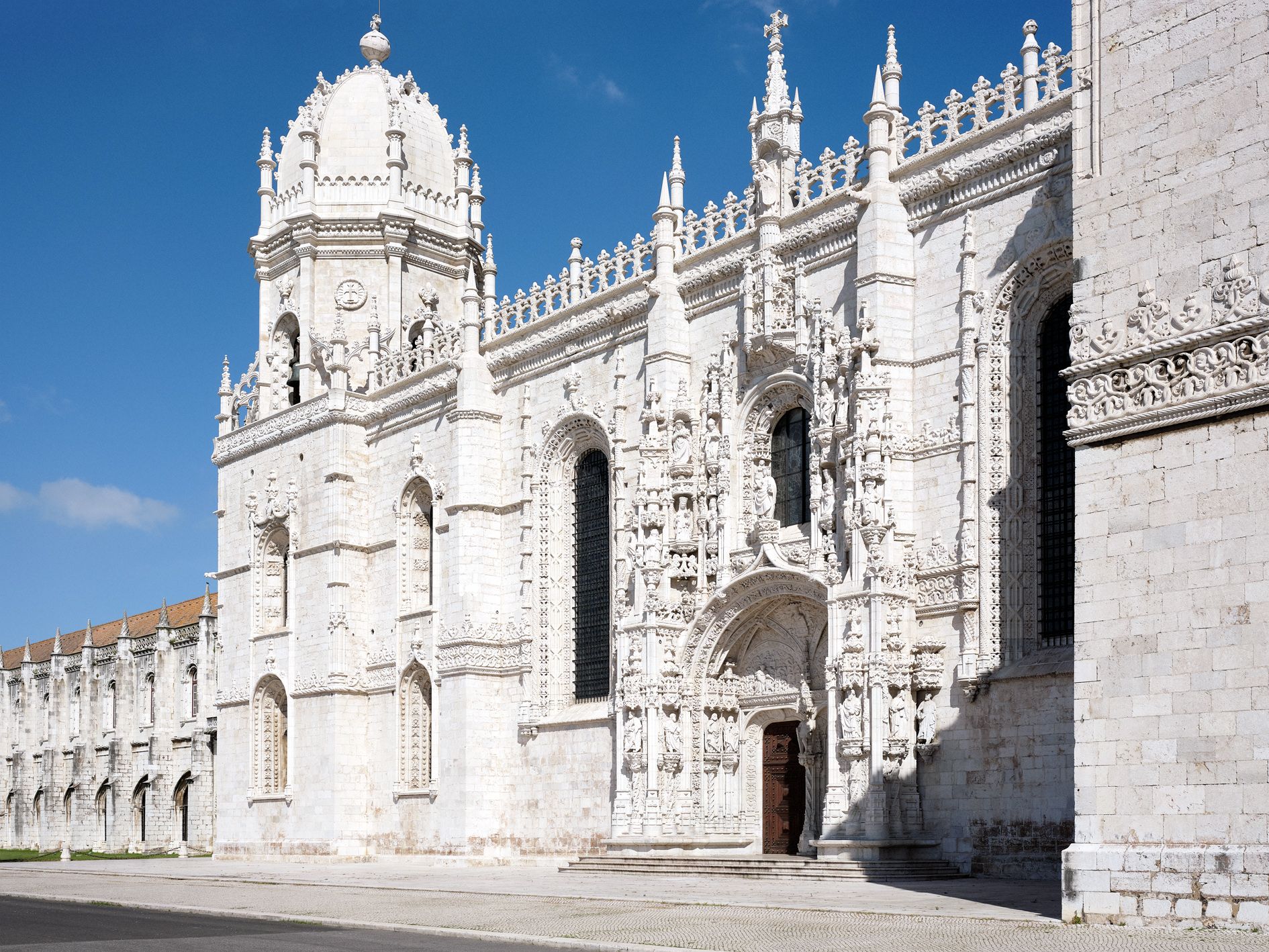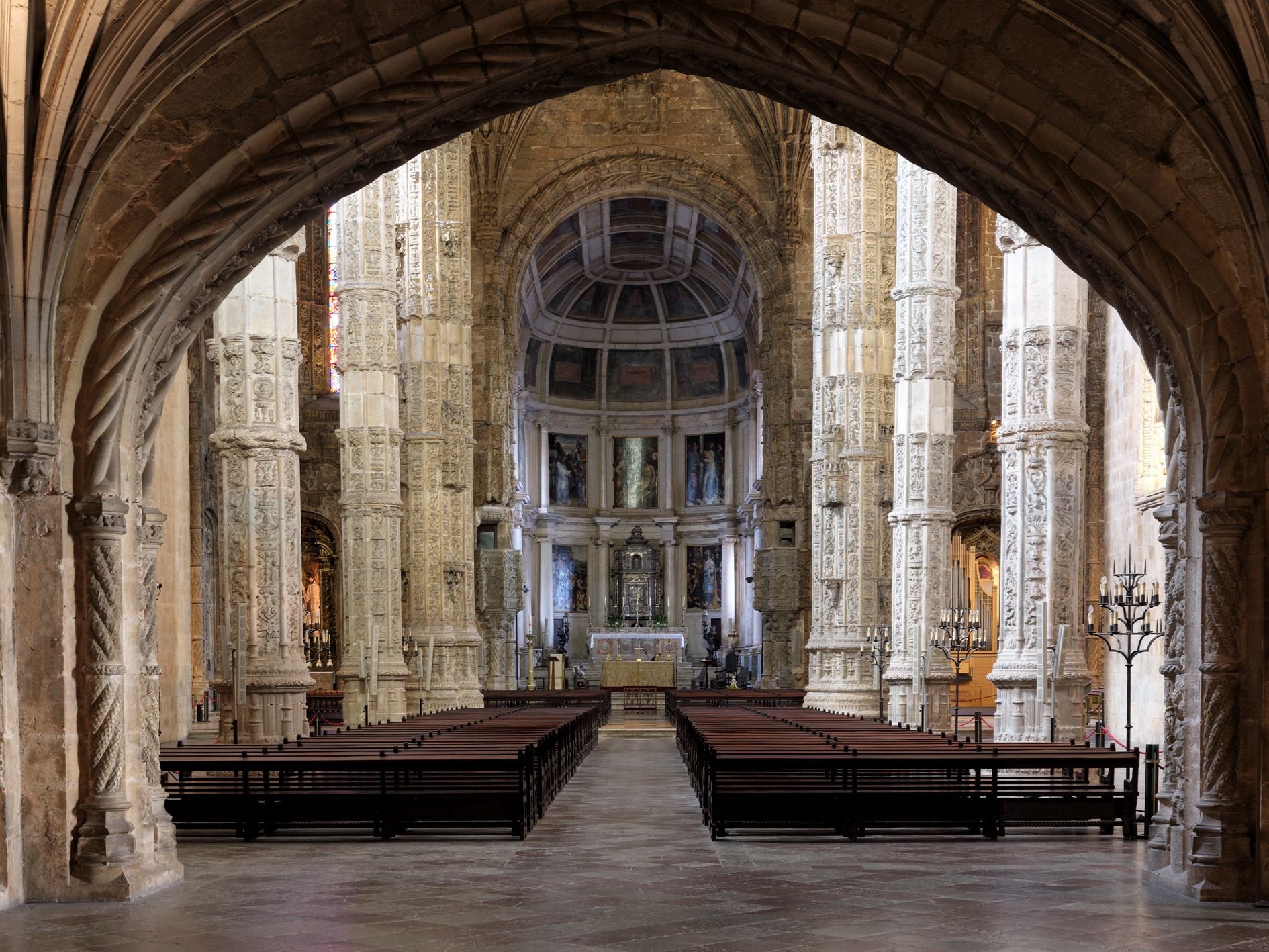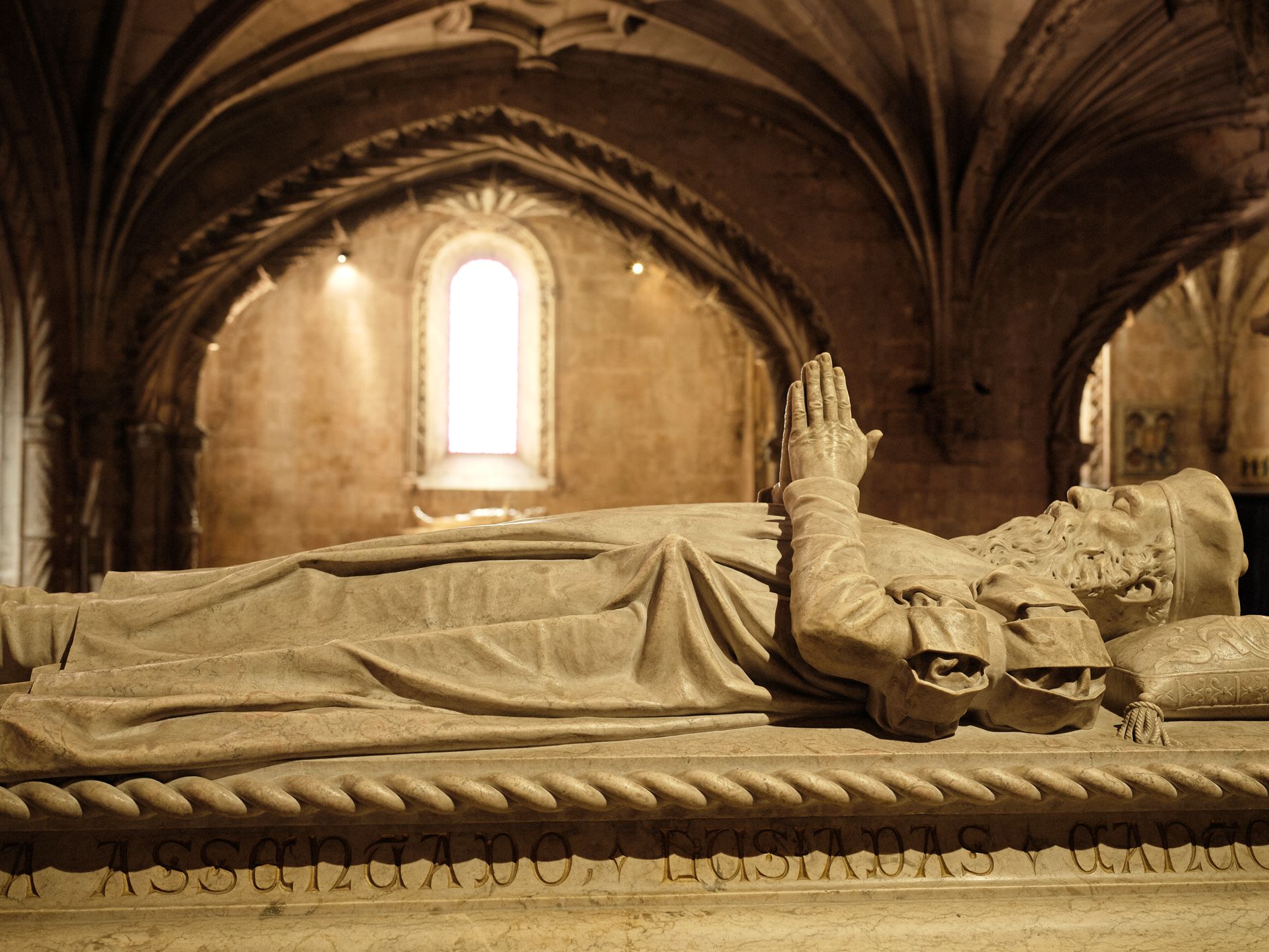A masterpiece of Portuguese architecture, the Royal Monastery of Santa Maria de Belém, commonly known as Jerónimos Monastery as it was intended for the Order of São Jerome, was classified National Monument in 1907 and inscribed on the UNESCO World Heritage List in 1983. The church, with religious service and visiting hours, and the cloister, secularized in the nineteenth century, form the most visited heritage complex in the country.
The building was commissioned by King Manuel I, whose reign lasted between 1495 and 1521, and required large financial resources and very demanding artistic resources, made available by the powerful patron. It is located in one of the most qualified areas of Lisbon, a historical and monumental setting next to the Tagus River, where the ships and caravels departed at the time of the Discoveries.
D. Manuel I ordered the construction of the Tower of Belém in order to protect not only the port of Lisbon, the Tagus estuary, but also the Jerónimos Monastery, then under construction. At the time, the configuration of the Tagus estuary provided effective proximity and visual connection between the two royal developments – the Tower was built in the river, 250 meters from the bank, on a basaltic outcrop, and the Monastery was erected on the bank, in front of Restelo beach.
The excellence of the building is due to the experience of the first master, Diogo de Boytac, and other notable architects and sculptors from different regions of Europe. Among these, we highlight the work of João de Castilho, from Biscaye, who directed the works from 1517, after completing the south portal of the church – richly decorated, where the images of the Patron Saint of Portugal, Archangel S. Miguel (at the top), and the image of Santa Maria de Belém (at the centre) stand out –, and the French sculptor Nicolau Chanterene who designed the western portal. This portal bears with visible apparatus the portraits of the patron kings, D. Manuel I and D. Maria of Castile, referred to by chroniclers as being “taken from the natural”.
The monastic ensemble preserves, in addition to the Manueline church, a large part of the magnificent conventual dependencies that contributed to its international fame, including the 16th-century cloister, the old monks' refectory and the room of the old bookstore.



